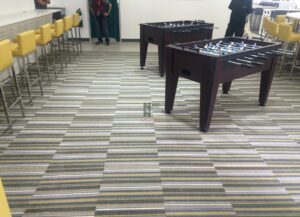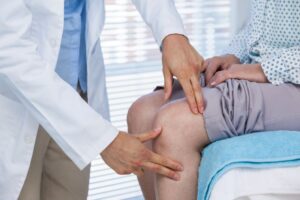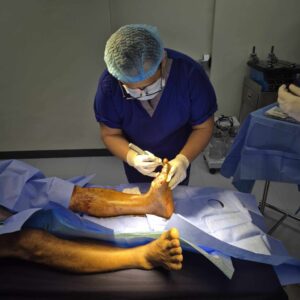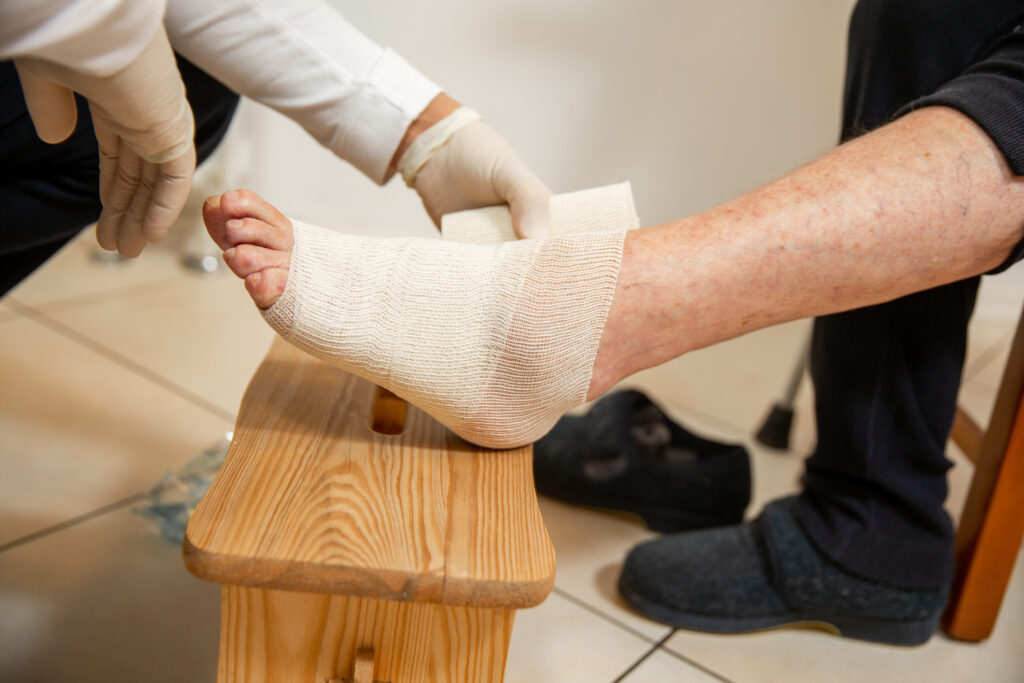Diabetic foot wounds are among the most serious complications faced by individuals living with diabetes. These wounds can progress rapidly due to reduced blood circulation and nerve damage, often leading to infections or, in worst cases, amputations. Orthopedic treatment for diabetic foot wound care plays a critical role in not only managing wounds effectively but also restoring mobility and preventing long-term disability.
Understanding the unique challenges of diabetic foot wounds and how orthopedic specialists address them is essential for patients and caregivers alike. With the right medical intervention, healing is possible—even for wounds that seem persistent or complex.
Understanding Diabetic Foot Wounds
Diabetic foot wounds typically develop from a combination of two major complications of diabetes: peripheral neuropathy and peripheral arterial disease. Neuropathy dulls pain sensation in the feet, allowing injuries to go unnoticed. Simultaneously, poor circulation slows the body’s ability to heal. When small cuts, blisters, or pressure sores are not treated promptly, they can quickly evolve into infected ulcers.
These wounds can appear minor at first but become limb-threatening if left unattended. Warning signs include redness, swelling, foul odor, drainage, or darkened skin around the affected area. The risk of hospitalization or surgical intervention increases with every day a foot ulcer goes untreated.
Why Orthopedic Care Is Essential in Diabetic Wound Management
Orthopedic treatment for diabetic foot wound care offers more than surface-level healing. While general practitioners may prescribe antibiotics or wound dressings, orthopedic specialists focus on the structural and biomechanical aspects that often underlie non-healing wounds. They treat the problem at its root by assessing how bones, joints, and tendons are impacting pressure distribution, stability, and tissue integrity.
Orthopedic care is especially valuable when wounds are recurrent or complicated by deformities such as Charcot foot, bunions, hammertoes, or collapsed arches. These structural issues create pressure points that traditional care often overlooks. By correcting the mechanics of the foot and offloading pressure from the wound site, orthopedic surgeons improve both healing rates and long-term outcomes.
Comprehensive Orthopedic Treatment Approach
Orthopedic treatment for diabetic foot wound care involves a coordinated, multi-step process designed to promote healing, prevent complications, and restore function. Key components include:
Infection Management: Infection control is the first and most urgent priority. Orthopedic surgeons may debride the wound—removing dead or infected tissue—to help healthy tissue regenerate. In severe cases, surgical drainage or removal of infected bone (osteomyelitis) may be necessary.
Tissue Preservation Strategies: Preserving as much healthy tissue as possible is a guiding principle. Orthopedic specialists work to maintain foot integrity while preventing the spread of infection or necrosis. Advanced therapies, such as negative pressure wound therapy or biological dressings, may be used to accelerate healing.
Offloading Devices and Pressure Redistribution: Foot deformities and gait abnormalities often place excessive pressure on the same areas of the foot, leading to wound recurrence. Custom orthotics, total contact casts, and specialized diabetic footwear are prescribed to redistribute pressure and protect vulnerable areas.
Surgical Interventions: When conservative measures fail, orthopedic surgeons may perform corrective surgeries. These include tendon lengthening, joint fusion, or realignment procedures to correct deformities and optimize foot function.
Key Goals of Orthopedic Treatment for Diabetic Foot Wound Care
The orthopedic approach is tailored to achieve several interrelated goals that benefit the patient both short-term and long-term:
- Promote Rapid and Complete Healing: Surgical and non-surgical interventions accelerate tissue regeneration while addressing biomechanical issues that delay wound closure.
- Prevent Infection and Amputation: By managing infections early and stabilizing the structural integrity of the foot, the risk of amputation is significantly reduced.
- Preserve Limb Function: Orthopedic treatment aims to retain full use of the foot and ankle, preserving mobility and independence.
- Prevent Recurrence: Once the wound has healed, orthopedic specialists ensure that footwear, gait, and foot alignment are optimized to avoid new ulcers.
Tec Orthopedics: Specialized Care for Diabetic Foot Wounds
Tec Orthopedics stands out as a leader in providing expert orthopedic treatment for diabetic foot wound care. With a team dedicated to both wound healing and long-term mobility, patients benefit from personalized, multidisciplinary care. Each treatment plan is crafted around the patient’s unique anatomy, medical history, and lifestyle needs.
The clinic emphasizes early diagnosis, thorough evaluation, and proactive management. Their orthopedic team collaborates with vascular surgeons, endocrinologists, podiatrists, and rehabilitation experts to offer holistic care that targets both the wound and its root causes.
Services include advanced imaging for accurate assessment, debridement procedures, offloading strategies, and surgical correction of foot deformities. By focusing on both healing and prevention, Tec Orthopedics empowers patients to regain control of their health and mobility.
Preventive Strategies for Long-Term Foot Health
Even after successful orthopedic treatment for diabetic foot wound care, prevention remains a lifelong priority. Individuals with diabetes should adopt the following practices to protect their feet:
- Daily Foot Inspections: Look for blisters, cuts, or signs of infection. Early detection is crucial.
- Proper Footwear: Wear custom orthotics or shoes designed for diabetics to reduce pressure points and friction.
- Moisturize and Protect: Keep feet moisturized to prevent cracking but avoid applying lotion between toes, which can cause fungal infections.
- Regular Orthopedic Check-Ups: Periodic evaluations help detect structural issues before they lead to wounds.
- Control Blood Sugar: Maintaining stable glucose levels promotes better circulation and immune response.
Tec Orthopedics also offers education and coaching to help patients build lifelong habits that support foot health and prevent recurrence.
When to Seek Orthopedic Help for a Diabetic Foot Wound
Not all diabetic foot wounds require orthopedic intervention, but there are clear signs when a specialist’s help is warranted:
- Wounds that show no signs of healing after a few days
- Presence of swelling, foul odor, or blackened tissue
- Recurrent wounds in the same area
- Visible foot deformities
- Difficulty walking or increased pain in the foot or ankle
Timely orthopedic treatment for diabetic foot wound care often means the difference between minor intervention and major surgery. Early consultation with a specialist can stop the progression of complications and significantly improve outcomes.
Takeaway
Orthopedic treatment for diabetic foot wound care is a vital, proactive solution that addresses the complex factors preventing healing. More than treating wounds, it focuses on preserving mobility, preventing recurrence, and enhancing quality of life. For patients living with diabetes, partnering with an orthopedic specialist like those at Tec Orthopedics ensures that foot health is managed with expertise, compassion, and long-term results in mind.
Prompt care can mean the difference between healing and lifelong disability. If you or a loved one is struggling with a diabetic foot wound, consider consulting an orthopedic expert to take the first step toward recovery and mobility.











